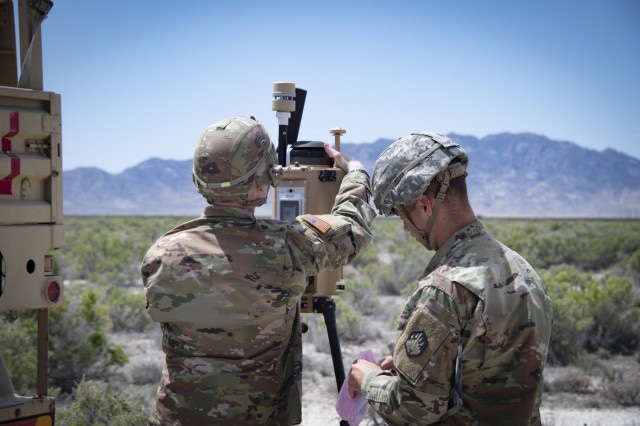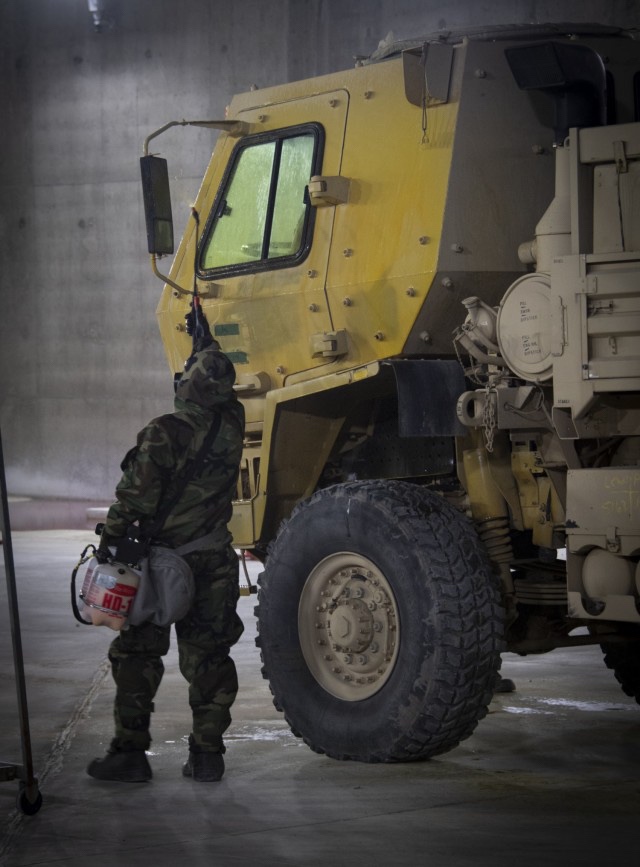DUGWAY PROVING GROUND, Utah — Soldiers from Fort Drum and Joint Base Lewis-McChord teamed with Marines from Camp Pendleton to test new tactical biological detection and chemical contamination indicator systems here.

Soldiers with the 59th Hazard Response Company and 13th Combat Sustainment Support Battalion along with Marines from the 3rd Marine Air Wing went hands-on with the Joint Biological Tactical Detection System (JBTDS) and the Contamination Indication Disclosure Assurance System (CIDAS), which indicates on chemical agent contaminants so decontamination can take place.
“These two operational tests have given my company the opportunity to focus on our critical war-time collective tasks of site assessment and decontamination and refine our tactics, techniques, and procedures,” said Capt. Ryan Oatman, company commander of 59th Chemical, Biological, Radiological and Nuclear (CBRN) Hazard Response Company.
“The training benefit while conducting these operational tests to my unit’s operational readiness makes this tasking to support new materiel development a win-win.”
According to Test Officer Mr. Josh Smith of the U.S. Army Operational Test Command’s Maneuver Support and Sustainment Test Directorate, test data collected will be used to inform senior Army and Joint Service leaders on how effective, suitable, and reliable the JBTDS and CIDAS systems will be during real-world operations.
“Working with a test unit that is excited about and embraces the opportunity to train its Soldiers while providing valuable feedback on potentially new CBRN materiel solutions with considerations for its employment makes the hard work of operational testing worth it,” Smith said.

Smith explained the units will have employed the JBTDS and CIDAS systems during replicated security and sustainment operations through multiple days of tough, realistic training in the harsh Dugway Proving Ground environment.
“Since operational testing is about Soldiers and unit missions,” he said, “this test event is about making sure the systems developed are — and remain effective — in a Soldier’s hands and suitable for the environments in which Soldiers and units train and fight.”
By Mr. Edward M. Jagodzinski, Test Officer, Maneuver Support and Sustainment Test Directorate, U.S. Army Operational Test Command

